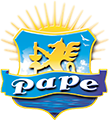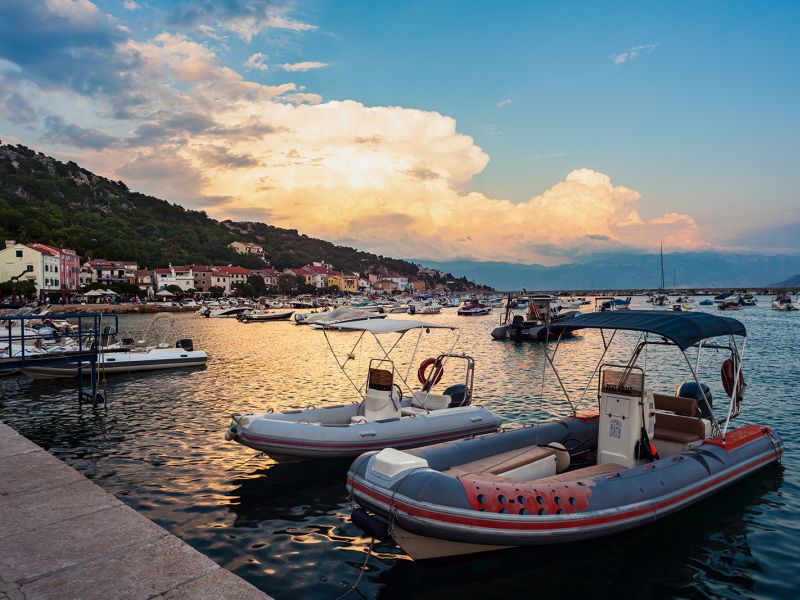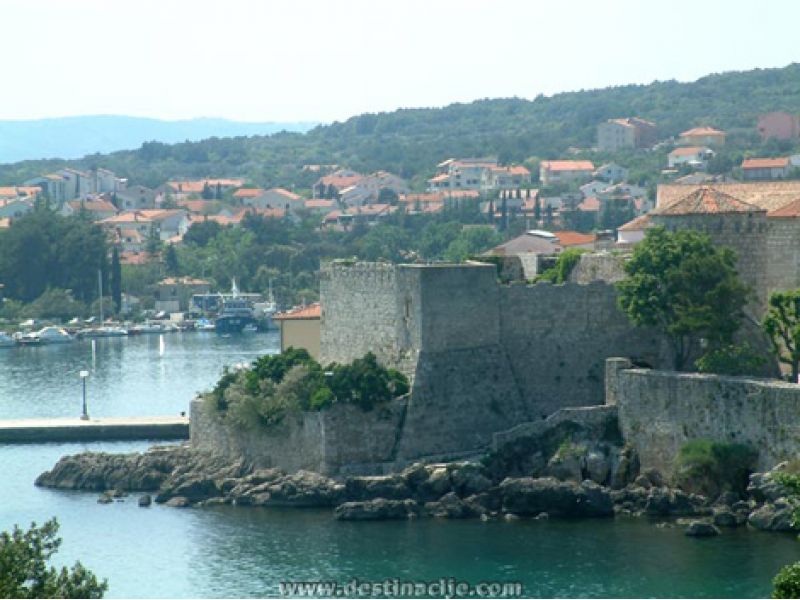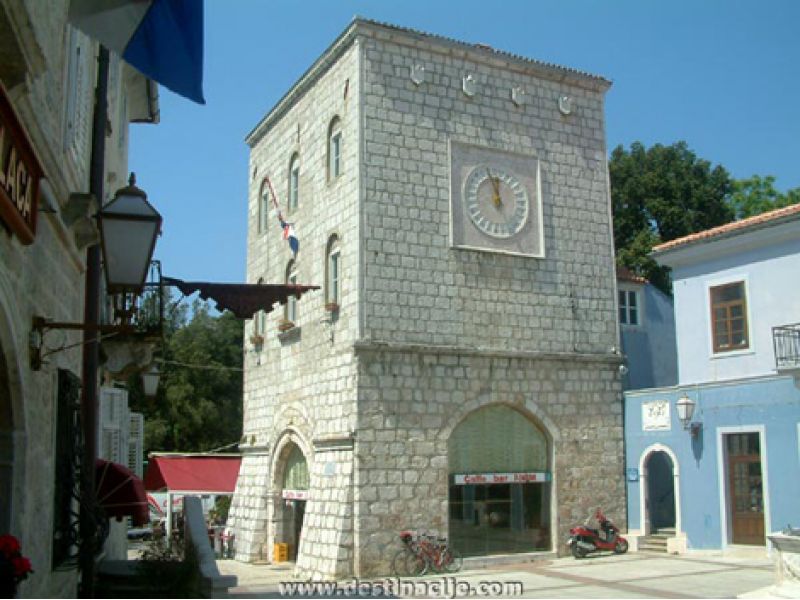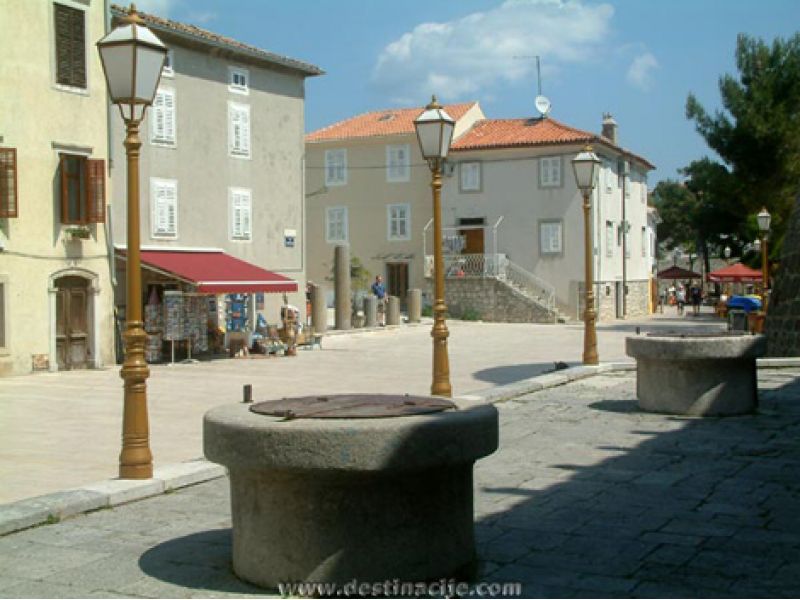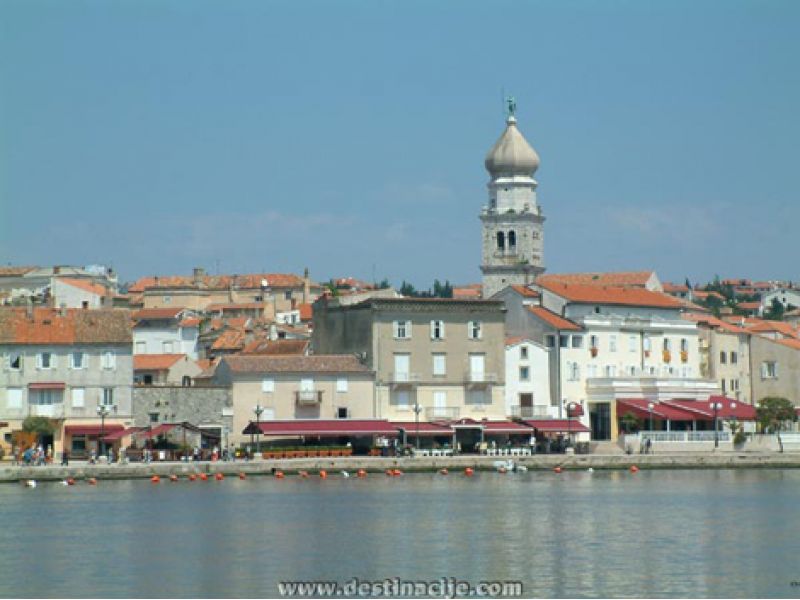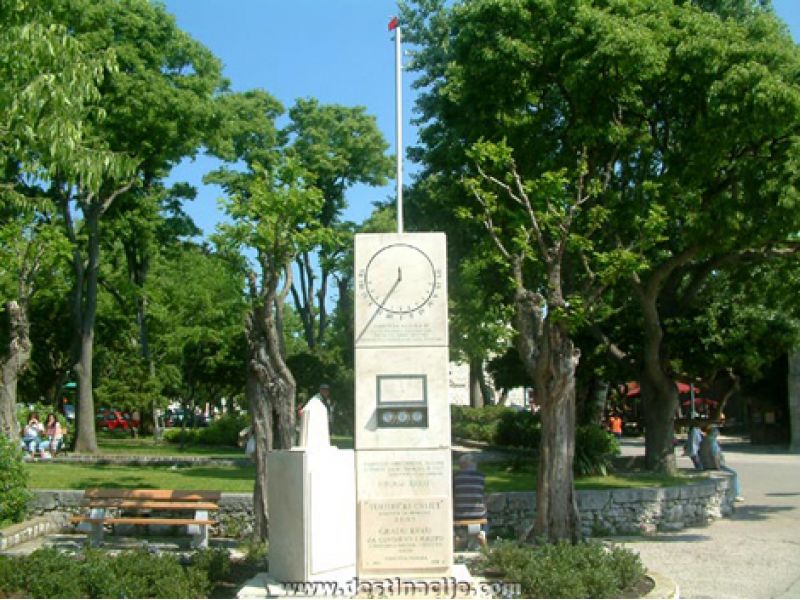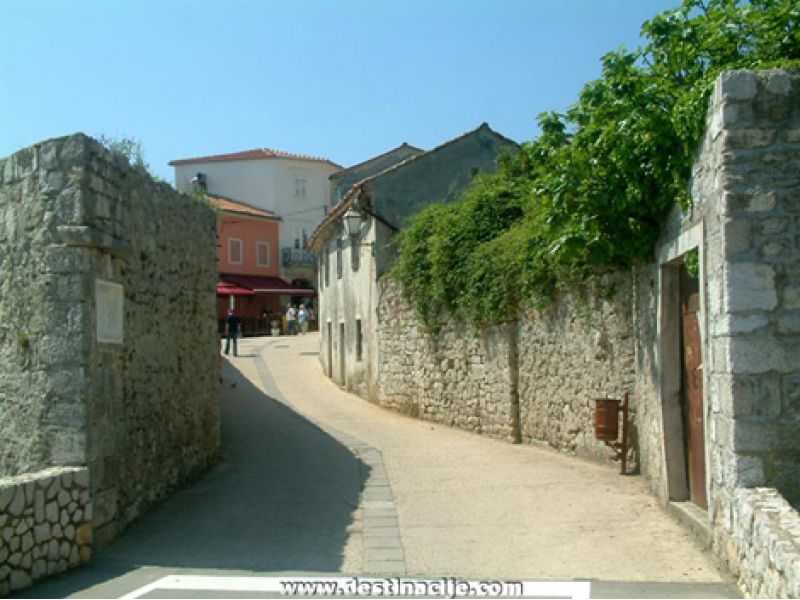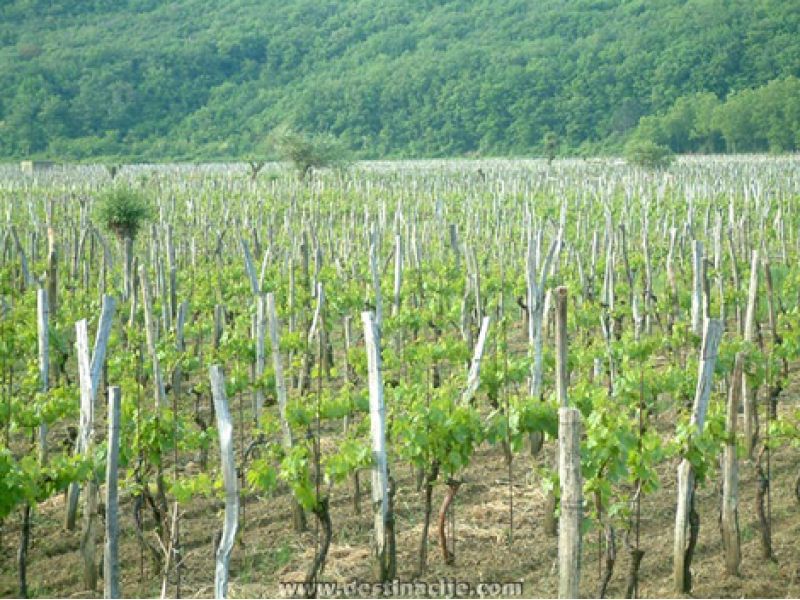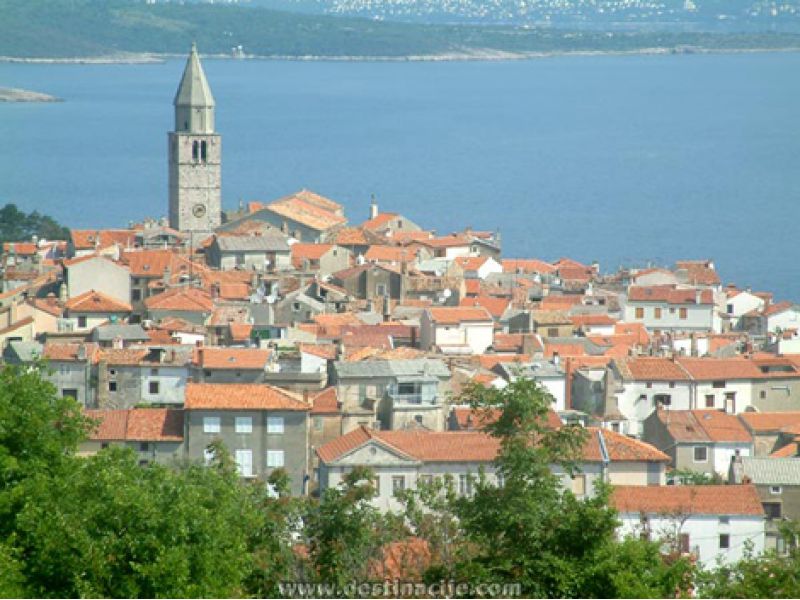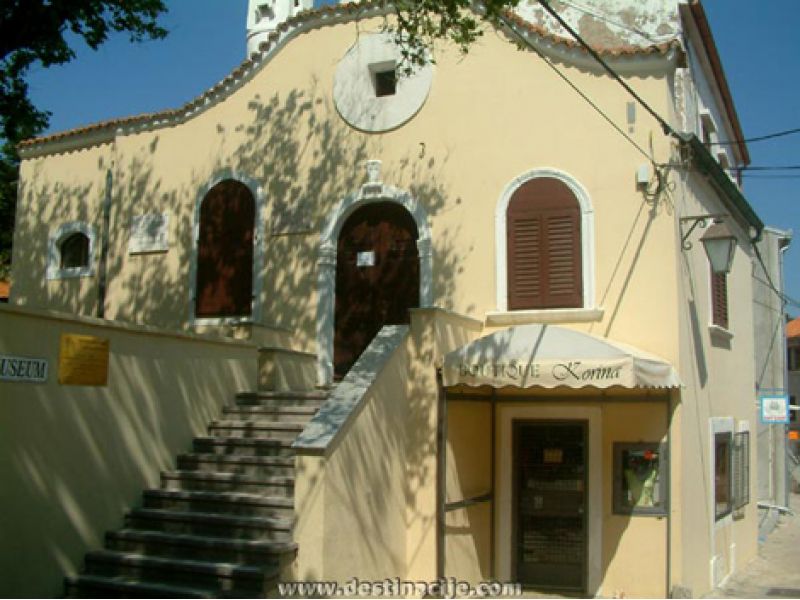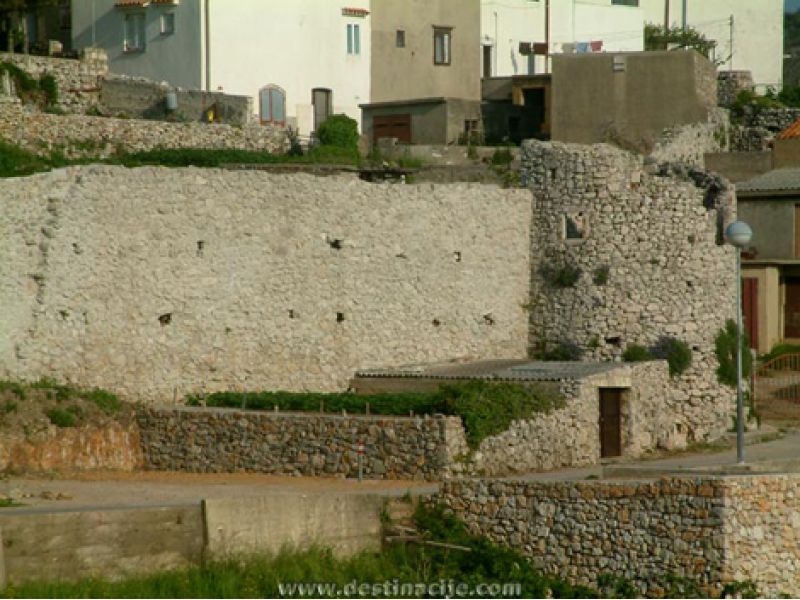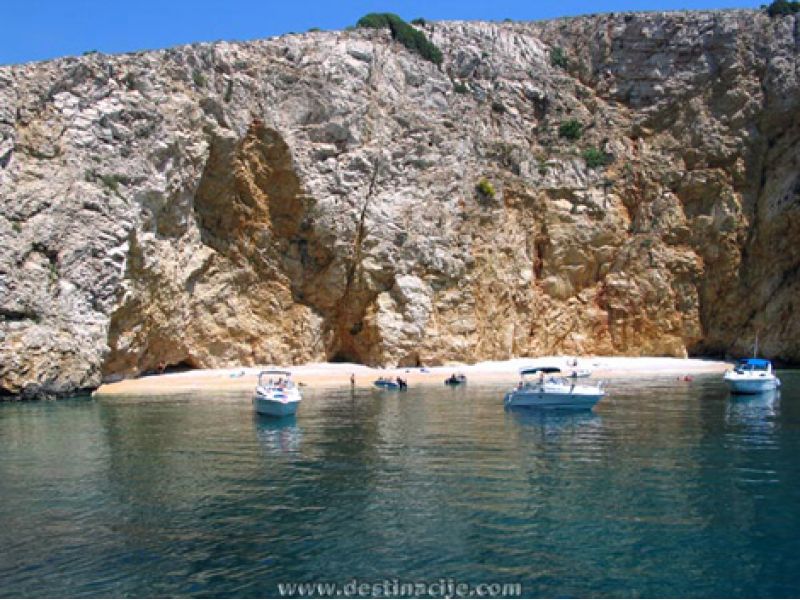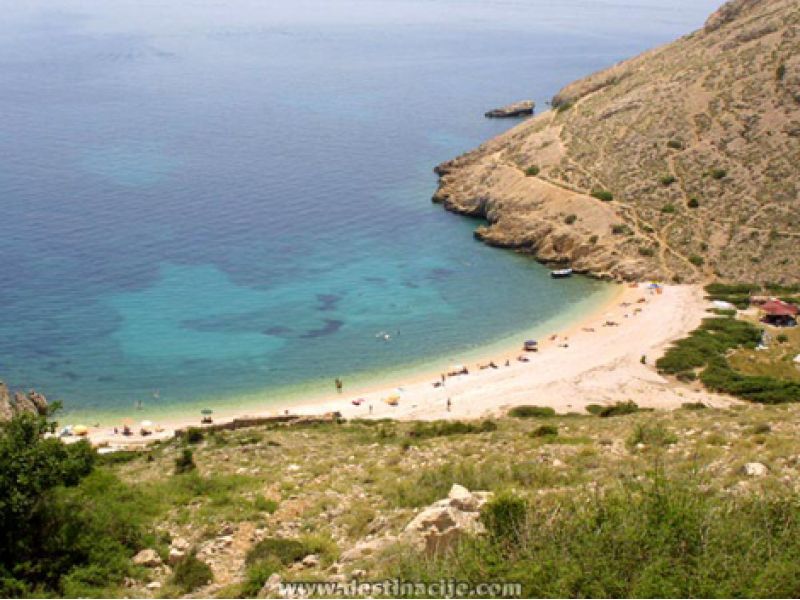Island of Krk - Geography
Island of Krk - Geography
The Island of Krk is in the Bay of Kvarner or Quarnero. It is the biggest island in the Adriatic, with an area of 409.9 square kilometres. The highest peak is Obzova, at 569 m. There are some twenty little islands, islets, rocks and reefs around the main island: Prvić, Galun, Zec, Plavnik, Kormati, Košljun and Sv. Marko (St Mark’s). The population of the island, at the last count, was 16,402, distributed among 68 settlements.
The relief is of the karst or limestone variety, with caves and caverns (Biserujka near Dobrinj), with sinkholes and dolines. The central part of the island is occupied by fertile fields called, Omišalj, Dobrinj, Vrbnik and Baška poljes.
The coast is highly indented, with a great many bays, coves and naturally pebbly beaches. The biggest of the bays are Soline (with its medicinal mud) and Puntarska Draga.
Climate: The island boasts a pleasant and mild Mediterranean climate. The average summer air temperature is 22.8°C, and the sea water temperature is 23 - 25°C.The main winds come from the north-east, the south and the west - the bora, sirocco and maestral. In terms of insolation, Krk is one of the most favoured parts of Europe, with over 2,500 hours of sun a year.
Water features: There are two lakes on the island, called Jezero and Ponikva, and three rivers: the Veli or Dobrinja Brook, the Vretenica and the Vela Rika.
Plant life: In the central and western part of the island there are predominantly woods, along with cultivated Mediterranean fruit and vegetables, vineyards and olive groves. Northern and southern Krk are given over to stony areas and rough pasture land.
Forest reserves: There are Quercus ilex, or holm or evergreen oak, at Glavotok and on the little island of Košljun.
Bird sanctuaries: The island of Prvić and the north east steep slopes of the coast, where the griffon vulture resides (Gyps fulvus Habl).
A particular feature of the Krk landscape consists of the thick drystone walls or gromače, and the shepherds’ stone-built folds on the plateau area above the Baška valley.
Care about the preservation and conservation of the environment is ongoing and systematic. Proof of this is given by the two blue pennants in the Punat Marina, the Big Beach at Baška, auto camp Ježavac, Lukobran beach, FKK Politin and Koralj beach.
Photo Gallery
Links
Book now!
Send us a request for accommodation with the desired arrival and departure dates. We will let you know if the accommodation you want is available.
Guest reviews
Great location, close to the marina, town center, restaurants. Very friendly and helpful host - she even delayed a private appointment to wait for us, as we were late vs. the announced time of arrival!
The beach in Punat is weird, as in the marina takes up a lot of the waterfront, and there is a large portion of concrete "beach", which we didn't like. But the nice, 15-minute walk is worth it as you get to proper, pebble beaches with clear and pleasant water.
Cristian18. 09. 2020.
danke für alles, sehr freundliche gastgeber! schöner garten mit ausreichend platz zum draußen sitzen.
Dominik18. 08. 2020.
Schönes Zimmer in super Lage mit kostenfreiem Parkplatz und netter Vermieterin
Die Besitzerin ist sehr freundlich und bietet gerne ihre Hilfe an. Wir wurden direkt eingeladen mit ihnen im Garten etwas zu Trinken. Die Lage zum Hafen ist super (3 min Laufen). Klimaanlage und Kühlschrank im Zimmer funktionieren tadellos. Parkplätze sind kostenfrei und direkt vor der Unterkunft.
Lea13. 08. 2020.
Nagyon jó elhelyezkedésű,kényelmes szállás.
Nagyon közel van a tengerhez. A házigazdánk kedves,segítőkész volt.Mindennel elégedettek voltunk.
Kornélia05. 09. 2019.
Stylish, close to the city and comfortable.
Iryna08. 07. 2019.
Odlični domaćini sa odličnim prijedlozima i savjetima, krasan objekt. Čisto i uredno. Centar gradića, super pozicija. Piva je bila taman, a utakmica odlična iako smo izgubili. Hrvatska je druga na svijetu!!!!
Marko26. 08. 2018.
